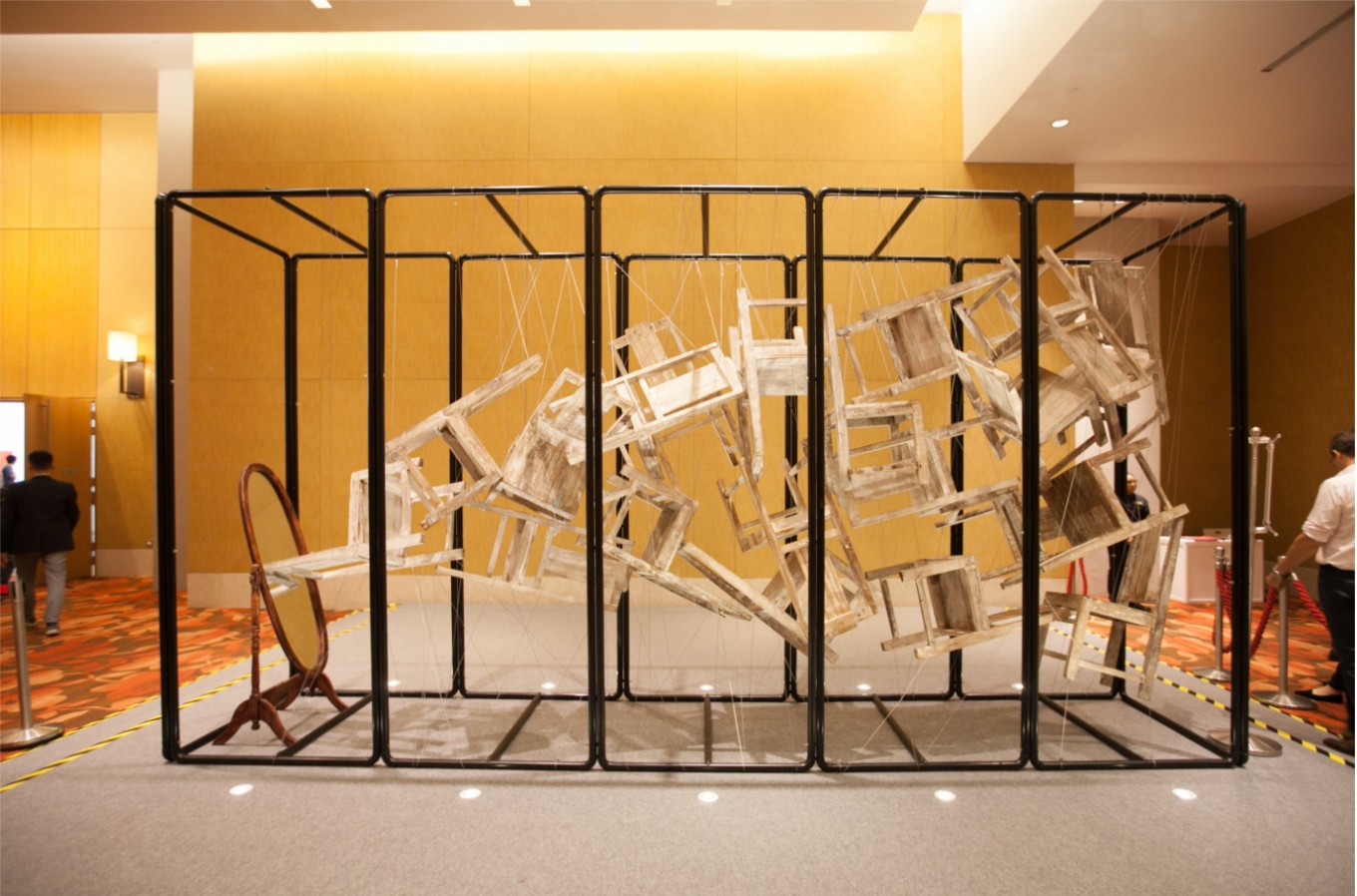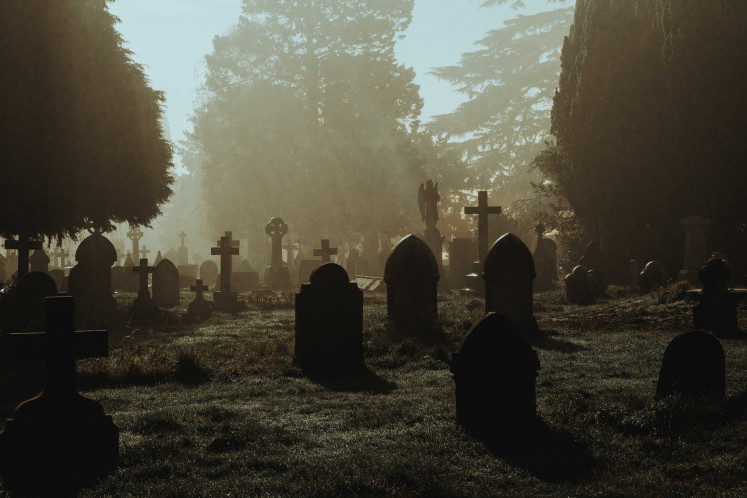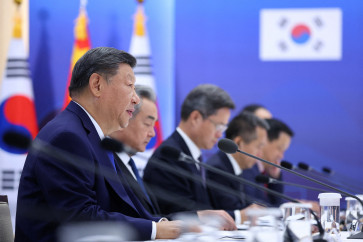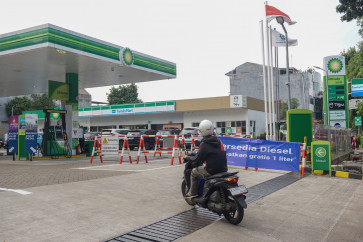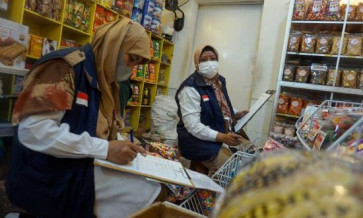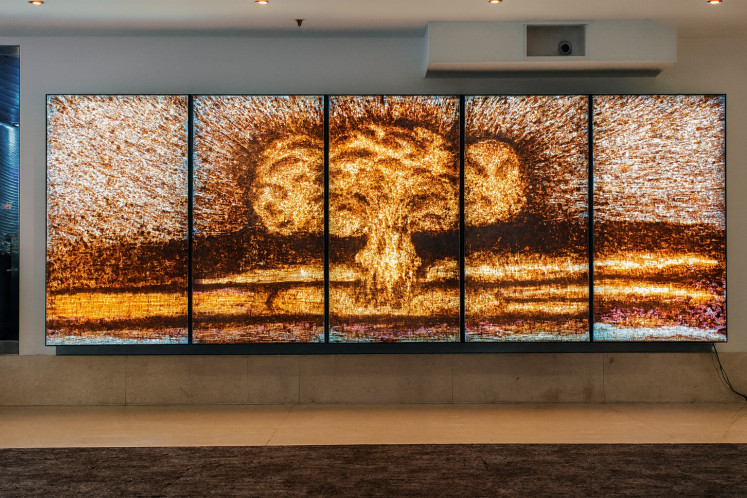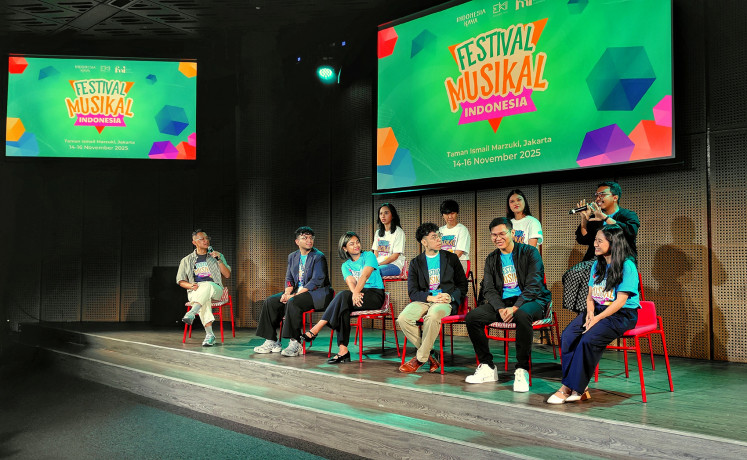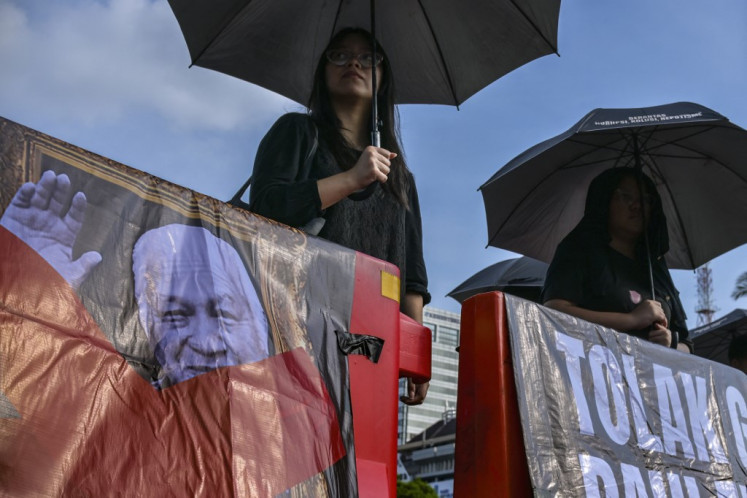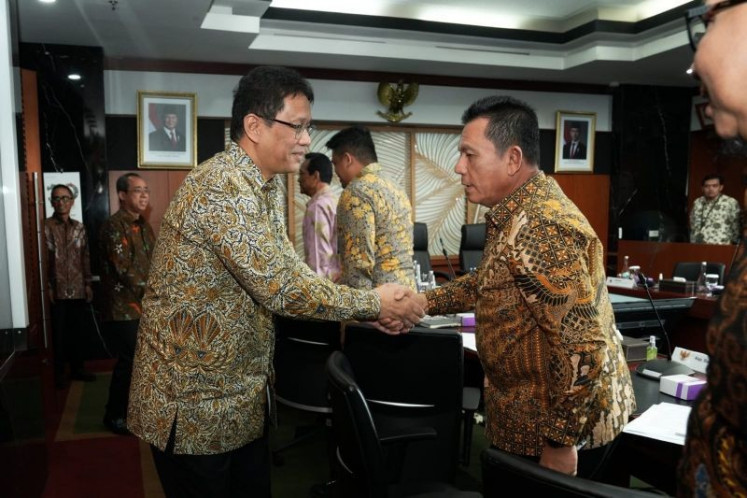Popular Reads
Top Results
Can't find what you're looking for?
View all search resultsPopular Reads
Top Results
Can't find what you're looking for?
View all search resultsArt Stage Singapore: To be or not to be
Change text size
Gift Premium Articles
to Anyone
W
e have to be clear that we can no longer sell art as mere merchandise or a commodity,” said Art State Singapore’s founder and fair director Lorenzo Rudolf, who has announced the fair is charting another direction.
It is not quite clear whether he means collaborating with a stronger fair, as one of Art Stage’s strategic board members has suggested an energizing injection.
For now, the weight has been laid on adequate content through the exhibition of the Southeast Asia Forum, the Collectors Stage and the Forum of Talks.
The fair proper, 131 galleries from 27 countries — about 40 fewer galleries compared to last year’s 170, was more of a boutique fair where the works on offer varied in quality and revealed contemporaneity in their diversity of understandings.
This year around, no fewer than eight Indonesian galleries lent their support (Can’s — rebranded from Canna Gallery, D’Gallery, Nadi Gallery, Zola Zulu, Fantastic Gallery, Roh Projects, Srisasanti Syndicate and Lawangwangi Gallery).
These galleries offered fresh works by “old-timers” like Entang Wiharso, Agus Suwage, Handiwirman, Eddie Hara, Arifien Neif, Richard, Ronald Manullang, Syaiful Garibaldi and last but not least, Eddy Susanto, the only artist whose work aptly responded to the situation and the Art Stage theme of “Capitalism”.
(Read also: An odyssey with your future self: Singapore Art Biennale 2016)
Eddy visualized with an installation of pigs (a metaphor for ever-hungry capitalism) their skins covered with commercial logos, correlating with the symbols on the world’s bank notes, such as the face of Benjamin Franklin on the US dollar, Queen Elizabeth on the pound sterling and Mao Zhedong on the yuan, which are looking down from a Javanese window frame.
The images on the bank notes were shaped by handwritten Javanese script relating to the original text in Serat Kalathida in which the sage Ronggowarsita in the 19th century described the greed and hedonism that plagued society of his time, revealing a similar situation to our present time.
It was also interesting to see Naufal Abshar’s new works in the Art Porters booth indicating the artist’s ongoing development.
Interesting works were also spotted in between, such as the delicate work by the Bangladeshi artist Tayeba Lipi at Sundaram Tagore Gallery; the works by Iqi Qori, an Indonesian artist at Art Front Gallery; the great mirror painting
Beautiful Virgin made of glass, plaster on wood by Pooya Aryanpour; the work by Malang-based artist Gatot Pujiarto at Pearl Lam’s; and many more.
There were also 20 Japanese galleries participating, some of which presented big names like Yayoi Kusuma.
Eddy’s work was also present in a commissioned work in the Collectors Stage. The work — a wooden door on which Columbus’ arrival in the Americas was drawn — is part of collector Hady Ang’s trilogy of PIGS, formed together with Vasan Sithiket and Ronald Ventura. PIGS stands for Politics, Immortality and Gods.
Eddy’s work represents Immortality and is based on a Javanese myth on the workings of the eclipse. Correlated to the arrival of Columbus in the Americas, it is yet another example of his skill in drawing on his Javanese culture to explain the events of today. The wooden door with Columbus’ images opening to the immortal Kala likens the eclipse as it happens in real time.
(Read also: Upcoming Java Jazz eyes more festivalgoers)
The Collectors Stage, which presented 19 works from six Singapore collectors who usually shy away from publication, was a first.
Curated by Enin Supriyanto, “Expose” featured collections by Hady Ang; Jim Amberson; Michael Tay and Talenia Phua Gajardo (MT Collection); Michelangelo and Lourdes Samson; Kenneth Tan; and a sixth collector who wished to remain anonymous.
Among the highlights were Tromarama’s Triptych More We, Less Me; Aditya Novali’s amazing innovation with dots, and Eddy Susanto’s stunning juxtaposition of Javanese mythology and scientific versions of the workings of the eclipse in Immortality.
Other interesting works were by Francis Ng. Handiwirman Saputra, Steve McQueen, Moffat Takadiwa, Asim Waqif, Martha Atienza, Leslie de ChavezKwayan de Guiya, Wong Hoy Chong, Lee Friendlander.
Crossing the thin line to the Southeast Asian Forum, the well-curated show of 24 works by 23 artists, by Nadia Ng, who has skillfully taken the initial Southeast Asian Platform to this elevated level of forum, was barely different from the Collectors Stage.
This was also reflected in the display. Meaningful and accentuating the diversity rising from the region, the forum’s exhibition included Indonesian artist Eldwin Pradipta’s video installation on the layers of tales about the Yogyakarta Waterkasteel; and Aditya’s amazing innovation with dots to abstract realistic images es and facts was a feat of wonder. Included was the innovative Vending Machine by Malaysia’ss Ivan Lam that “sold” artworks at S$20 the way one buys a soda at a vending machine.
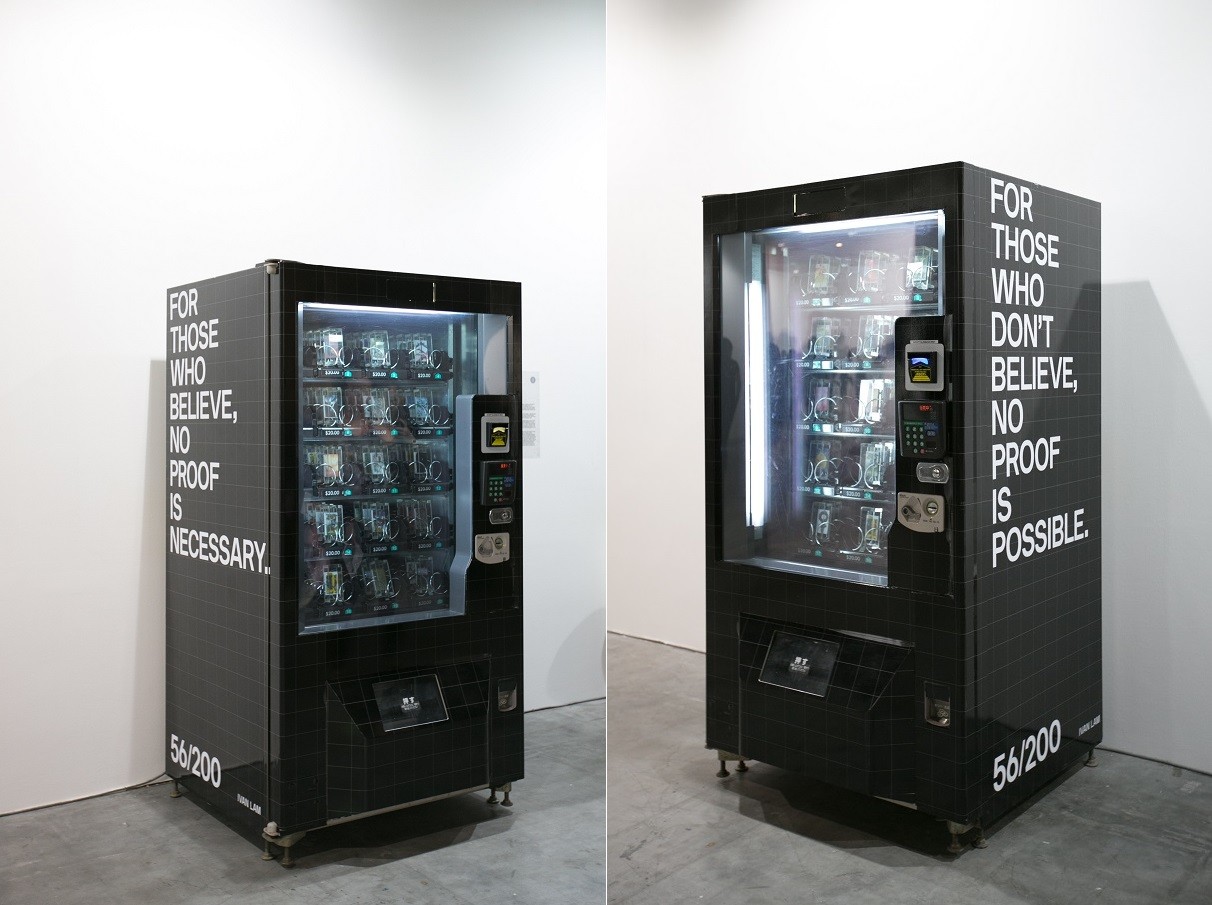 Vending machine by Ivan Lam, presented by Wei-Ling Gallery, Kuala Lumpur.(Art Stage Singapore/File)
Vending machine by Ivan Lam, presented by Wei-Ling Gallery, Kuala Lumpur.(Art Stage Singapore/File)
Other works included Thailand’s Pairot’s installation of Weapons for the Citizen, a huge installation of weapons made of textiles, the hard steel replaced by cushioning material.
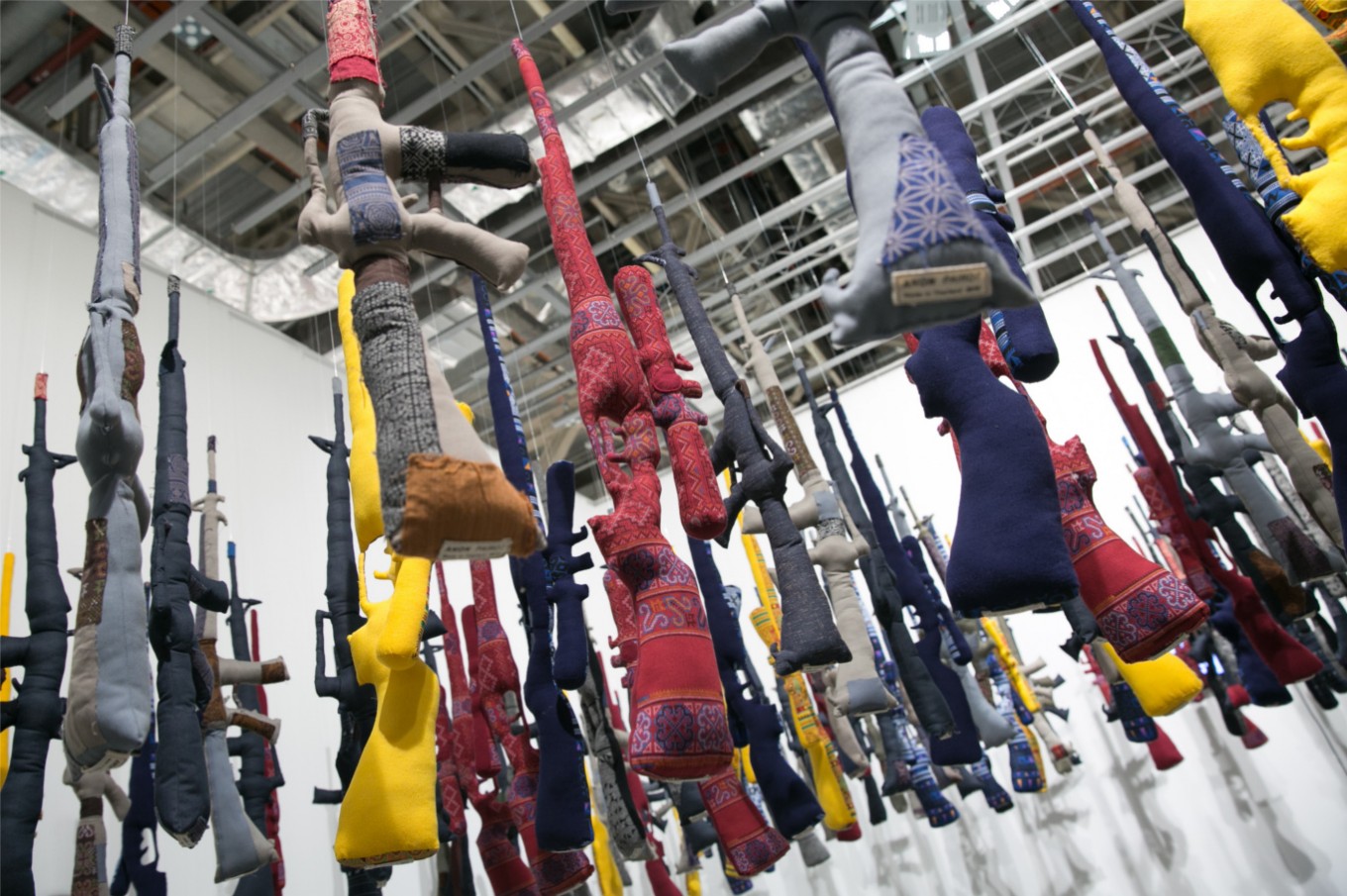 Weapons for the Citizen (2016) by Anon Pairot: Toy guns fabricated from assorted textiles made in Thailand, presented by Gallery Seescape.(Art Stage Singapore/File)
Weapons for the Citizen (2016) by Anon Pairot: Toy guns fabricated from assorted textiles made in Thailand, presented by Gallery Seescape.(Art Stage Singapore/File)
There was also the 32-channel sound installation by Tintin Wulia titled Neitherland, Whitherland, featuring original spoken-word poetry by 15 narrators in various languages, an intimate piece on borders and her own condition. Another strong focus was made on the Forum of Talks covering issues related to “Capitalism”. From alternative spaces to collector-founded Art Centers, the issue of Art + Money and the challenges faced by artists vis-à-vis the forces of protectionism, fundamentalism and oligarchy, the talks covered the spectrum of anxiety that marks our current situation.

